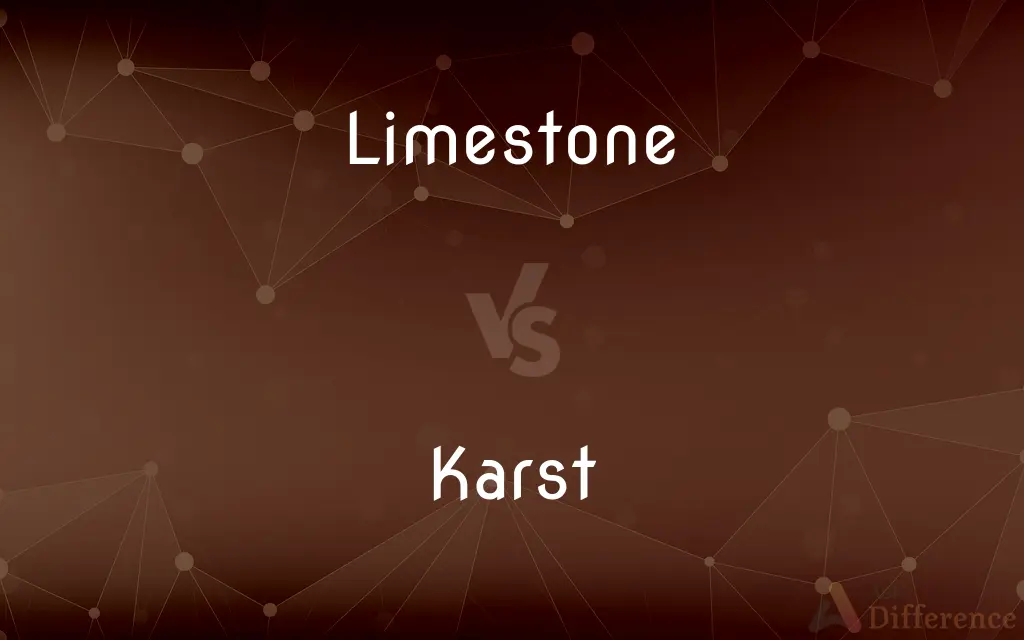Limestone vs. Karst — What's the Difference?

Difference Between Limestone and Karst
ADVERTISEMENT
Compare with Definitions
Limestone
Limestone is a common type of carbonate sedimentary rock. It is composed mostly of the minerals calcite and aragonite, which are different crystal forms of calcium carbonate (CaCO3).
Karst
Karst is a topography formed from the dissolution of soluble rocks such as limestone, dolomite, and gypsum. It is characterized by underground drainage systems with sinkholes and caves.
Limestone
A common sedimentary rock consisting mostly of calcium carbonate, CaCO3, used as a building stone and in the manufacture of lime, carbon dioxide, and cement.
Karst
An area of irregular limestone in which erosion has produced fissures, sinkholes, underground streams, and caverns.
Limestone
An abundant rock of marine and fresh-water sediments; primarily composed of calcite (CaCO3); it occurs in a variety of forms, both crystalline and amorphous.
ADVERTISEMENT
Karst
(geology) A type of land formation, usually with many caves formed through the dissolving of limestone by underground drainage.
Limestone
Pertaining to or made of limestone.
Limestone
A rock consisting chiefly of calcium carbonate or carbonate of lime. It sometimes contains also magnesium carbonate, and is then called magnesian or dolomitic limestone. Crystalline limestone is called marble.
Limestone
A sedimentary rock consisting mainly of calcium that was deposited by the remains of marine animals
Share Your Discovery

Previous Comparison
Tiredly vs. Wearily
Next Comparison
Sniffle vs. Cry













































